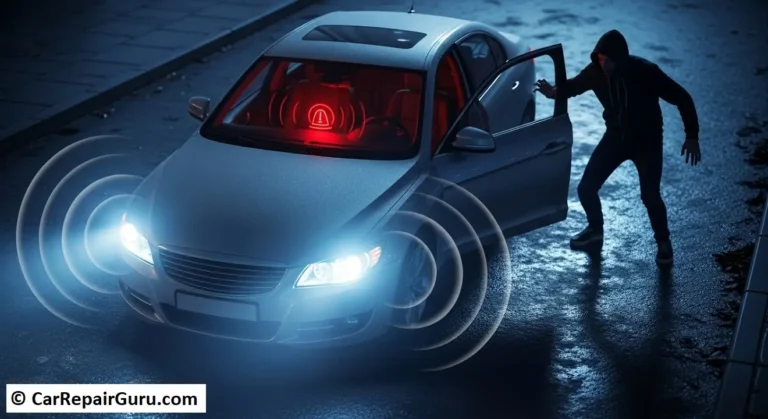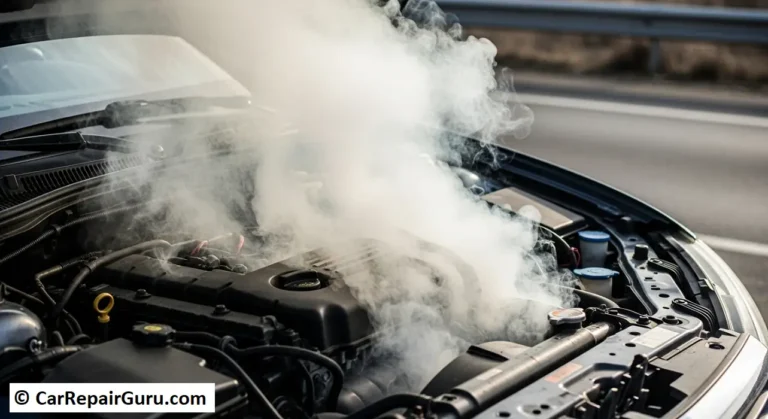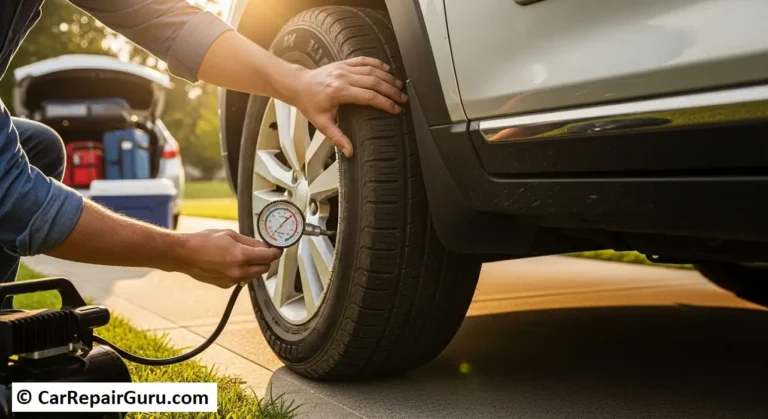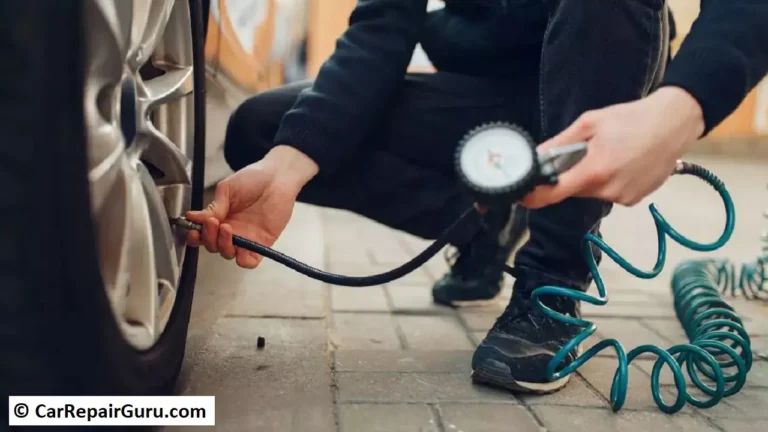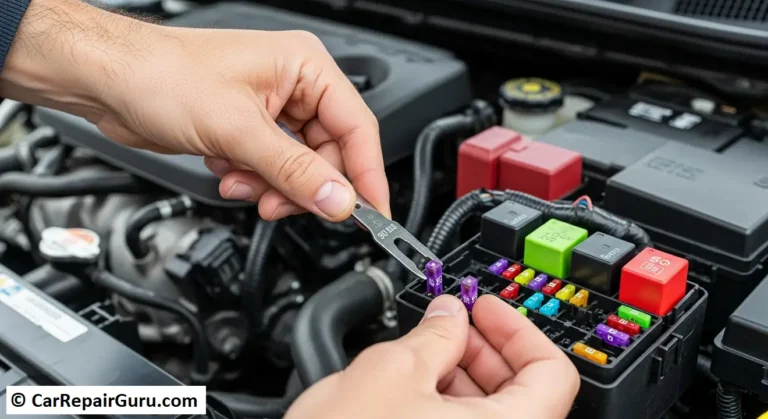
Ever feel that moment on a long, straight road? Your head feels heavy, your blinks last just a little too long, and the white lines on the highway start to blur into a hypnotic trance. That’s driver fatigue, and it’s more than just feeling a bit tired—it’s a silent and deadly danger.
According to the National Highway Traffic Safety Administration (NHTSA), drowsy driving is responsible for thousands of crashes, injuries, and fatalities each year. It impairs your judgment, slows your reaction time, and dulls your senses as much as driving drunk.
The good news is that avoiding driving fatigue is entirely possible. This isn’t about fighting biology with sheer willpower; it’s about being smart, prepared, and honest with yourself. This guide provides a complete toolkit to keep you safe, covering the root causes of fatigue, crucial warning signs, pre-trip preparations, on-road tactics, and even long-term habits for better alertness.
Are You Too Tired to Drive? Know the Warning Signs
Before we dive into solutions, you need to recognize the enemy. Drowsy driving can sneak up on you. If you experience any of these signs of fatigue while driving, it’s a critical signal to pull over immediately.
- Frequent Yawning: This is the most classic sign your body is begging for rest.
- Heavy Eyelids: You find it difficult to keep your eyes open and focused.
- Drifting and Lane Correcting: You’re constantly drifting from your lane, hitting rumble strips, or tailgating the car in front of you.
- “Zoning Out”: You can’t remember the last few miles you’ve driven. Your thoughts are disconnected, and you’re lost in a daydream.
- Missing Exits or Signs: Your brain isn’t processing information correctly, causing you to miss important cues.
- Restlessness and Irritability: You feel impatient, agitated, and easily annoyed by other drivers or traffic.
- Slower Reaction Time: A car brakes in front of you, and it takes you a second longer than usual to respond.
If any of these sound familiar, you are too tired to drive safely. It’s not a maybe; it’s a definite.
Why Am I So Tired? The Deeper Causes of Driving Fatigue
Understanding why you’re tired is the first step to preventing it. It’s often more complex than just a single late night.
- The Impact of “Sleep Debt”: Fatigue is cumulative. If you’ve only been getting 5-6 hours of sleep for several nights, you build up a “sleep debt.” One good night’s sleep before a trip often isn’t enough to pay it back, leaving you vulnerable to drowsiness.
- Driving Against Your Body Clock (Circadian Rhythms): Your body has a natural 24-hour clock that dictates when you feel alert and when you feel sleepy. There are two major dips: the mid-afternoon slump (around 1-3 p.m.) and the deep overnight window (from 2-6 a.m.). Driving during these times means you’re fighting your own biology.
- How Diet and Hydration Affect Your Energy: A heavy, carbohydrate-rich meal can lead to a “food coma,” making you feel sluggish. Likewise, even mild dehydration is a common but overlooked cause of fatigue and poor concentration.
- The Role of Monotony and Environment: A long, boring stretch of highway, a warm and stuffy car cabin, and a lack of mental engagement create the perfect recipe for “highway hypnosis,” lulling your brain toward sleep.
How to Prepare Before a Long Drive
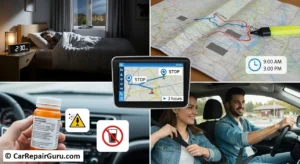
The most effective way of avoiding driving fatigue happens before you even put the key in the ignition. Here are five proactive steps.
- Prioritize a Full Night’s Sleep: This is non-negotiable. Aim for 7 to 9 hours of quality sleep for at least two consecutive nights before a long trip to erase any lingering sleep debt.
- Plan Your Driving Schedule Wisely: Check your route and plan your driving hours to avoid your body’s natural sleep windows. If you can, avoid starting a long journey after a full day of work.
- Schedule Regular Breaks in Your Route: Don’t wait until you’re tired to take a break. Pre-plan a stop every 2 hours or 100 miles. Use this time to get out of the car, stretch, and refresh.
- Avoid Alcohol and Drowsiness-Inducing Medication: Alcohol, even from the night before, can amplify fatigue. Carefully read the labels on any prescription or over-the-counter medications, as many can cause drowsiness as a side effect.
- Find a Co-Driver (The “Buddy System”): This is one of the best long distance driving tips. Sharing the driving duties allows each person to get some real rest. Agree to switch every 2-3 hours and keep each other accountable for spotting signs of fatigue.
Staying Alert on the Road – Real-Time Tactics to Combat Fatigue
Even with the best preparation, fatigue can set in. Here are six on-the-road tactics for staying awake while driving.
- Take a Strategic Power Nap: This is, by far, the most effective short-term solution. When you feel tired, pull over to a safe, well-lit location like a rest stop. A 20-30 minute power nap can dramatically improve alertness without making you groggy.
- Use Caffeine Correctly: A cup of coffee or an energy drink can help, but it’s a temporary aid, not a cure. It takes about 30 minutes for caffeine to kick in. A pro tip: drink your coffee, then immediately take a 20-minute power nap. You’ll wake up just as the caffeine hits, feeling doubly refreshed.
- Stay Hydrated and Snack Smart: Skip the sugary drinks and heavy fast food. Keep a bottle of water handy and snack on protein-rich foods like nuts, seeds, or a protein bar to maintain stable energy levels.
- Keep the Cabin Cool and Fresh: A warm, stuffy car is a cozy invitation to sleep. Turn down the temperature, use the A/C, or crack a window to keep fresh, cool air circulating.
- Engage Your Mind (But Not Too Much): Monotony is a major trigger for fatigue. Listen to an engaging podcast, a thrilling audiobook, or create an upbeat music playlist. Avoid anything too calming or, on the other end, too distracting.
- Get Out and Move During Breaks: When you take a scheduled break, don’t just sit in the car. Get out, walk around, do some jumping jacks, or stretch your limbs. Getting your blood flowing is a fantastic way to wake up your body and mind.
Your High-Tech Co-Pilot – Leveraging Technology to Stay Safe
Modern vehicles and gadgets offer a great safety net. While they can’t replace sleep, they can provide a crucial warning.
- Use Your Car’s Driver Alert System: Many new cars are equipped with a drowsiness detection system or attention assist. These systems monitor your steering patterns, lane position, and other inputs for signs of inattentiveness and will display an alert—often a coffee cup symbol—recommending you take a break.
- Consider Anti-Sleep Alarms: For those who drive frequently at night, a consumer gadget like an earpiece alarm can be useful. These devices sound a loud alert if your head nods forward, jolting you awake.
- Plan Breaks with Navigation Apps: Apps like Google Maps or Waze allow you to add stops to your route. Use this feature to proactively schedule your rest stops before you even start driving.
What Doesn’t Work – Don’t Fall for These Fatigue Myths
There’s a lot of bad advice out there. Relying on these myths is a gamble you can’t afford to take.
- Myth: Blasting the radio will keep me awake.
- Reality: While it might help for a few minutes, your brain quickly adapts and tunes it out. It does nothing to combat the underlying physical need for rest.
- Myth: Opening the window is a permanent fix.
- Reality: The blast of cold air provides a temporary jolt, but it doesn’t cure fatigue. As soon as you close the window, the drowsiness will return with a vengeance.
- Myth: I’m a good driver, so I can “tough it out.”
- Reality: This is the most dangerous myth of all. Fatigue is a physiological state. Your brain needs sleep, and willpower cannot overcome that biological need. A fatigued brain is an impaired brain.
Lifestyle Habits for Better Driving Alertness

If you constantly feel tired behind the wheel, it might be time to look at your overall lifestyle.
- Address Potential Sleep Disorders: If you suffer from chronic daytime sleepiness despite getting enough hours in bed, talk to a doctor. An undiagnosed condition like sleep apnea driving is extremely dangerous. It causes you to stop breathing briefly throughout the night, destroying sleep quality and leading to severe fatigue.
- Improve Your Overall Sleep Hygiene: Practice habits that promote better sleep every night. Maintain a consistent sleep-wake schedule (even on weekends), create a cool, dark, and quiet bedroom, and avoid screens for an hour before bed.
- Incorporate Regular Exercise: Regular physical activity is proven to boost overall energy levels and improve the quality of your sleep, making you less susceptible to fatigue in the first place.
Your Final Destination – Prioritizing Safety Over Speed
Ultimately, avoiding driving fatigue comes down to one simple principle: respect your body’s limits. No deadline, appointment, or vacation destination is worth risking your life or the lives of others on the road.
Prepare before you drive, listen to your body’s warning signs, and have the courage to pull over when you need to.
Fatigue behind the wheel is a choice. Make the safe choice.
Share this guide with a friend or family member before their next road trip. It might be the most important travel tip they ever receive.
Frequently Asked Questions About Driving Fatigue
Is it illegal to drive while tired?
While it may not be explicitly illegal in every state, you can absolutely be charged with reckless driving if your fatigue causes you to drive erratically or leads to an accident. Some states, like New Jersey with its “Maggie’s Law,” have laws that specifically address it.
How long does it take for caffeine to work for driving?
It generally takes about 30 minutes for you to feel the full effects of caffeine. However, remember that it’s a temporary loan of energy, not a solution. The fatigue will return later.
Who is most at risk for drowsy driving?
The highest-risk groups include commercial truck drivers, shift workers (especially those on the night shift), teenagers and young adults, and anyone with an untreated sleep disorder.
How bad is drowsy driving compared to drunk driving?
It is surprisingly similar and just as dangerous. Being awake for 18 hours straight can impair your driving ability as much as having a blood alcohol level of 0.05%.
What are the best foods to eat to stay alert on a road trip?
Stick to light, protein-rich snacks like nuts, seeds, or jerky and drink plenty of water. Avoid heavy meals or sugary foods, as they can make you feel sluggish and tired.
